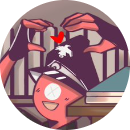If the role of the school changes in the future, the relationship between the teacher and the student will change. We see teachers act as instructors rather than knowledge, so when schools change, students can be fully autonomous, self-taught in the way they feel most appropriate. Second, the Internet is everywhere with unbelievably fast speeds. Students will be connected around the world in virtual spaces and anyone can make a request to the global community to help solve a problem. taught from all over the world through hologram and virtual reality glasses, and it is possible that students in each class are segregated according to level and skill level. Due to the abundant number of teachers and not limited teaching space, the classes will have fewer and fewer students, creating an intensive teaching process, the more, the more technology develops, meaning is that the division of class will be more pronounced (even today there is a division of classes). And pens, paper, boards or chalk remained in memory and were completely replaced by electronic touch boards. The lesson will be more vivid thanks to 360 images, virtual reality glasses, and 3-dimensional virtual images. The course materials will therefore be much more vivid. A Spanish teacher can take the class to Mexico City to meet the locals and practice conversations using virtual reality glasses. Geography or Astronomy class, the whole Milky Way will be shown around students thanks to hologram technology. Every student going to school will have a robot accompanying him. Those are the visions of nothing too far-fetched when life is powered by technology.
Luyện tập tổng hợp
Đúng 2
Bình luận (0)
Các câu hỏi tương tự
Các bạn giúp soạn topic với những thông tin dưới đây để mai thi nói nha, ngắn gọn cũng được
1.What is an extended family? 2. What is a nuclear family? 3. Do you prefer living in a nuclear or extended family? Why? 4. What are the disadvantage of living in a nuclear family? 5. Which of the changes in Viet Nam do you think the most beneficical? 6. What are the most important qualities for a person to get along with other members in a extended family?
Viết giúp mình topic ầm 10 -----> 15 câu vs ạTopic: Talk about life in the past?
*Write a paragraph about the roles of the teenagers in the future
Viết dùm mình topic với ạ, viết ngắn thôi ạ, tầm 80-90 từ, cảm ơn ạ
Topic 1: Talk about one of the famous traditional craft villages in viet nam that you know.
Topic 2: Talk about some drawbacks of the city life
Topic 3: Talk about life skills for teenagers
Topic 4: Talk about the differences in entertainment activities of children these days and in the past
Topic 5: Talk about a wonder of Vietnam that you know
Topic 6: Talk about Viet Nam then and now
Đọc tiếp
Viết dùm mình topic với ạ, viết ngắn thôi ạ, tầm 80-90 từ, cảm ơn ạ
Topic 1: Talk about one of the famous traditional craft villages in viet nam that you know.
Topic 2: Talk about some drawbacks of the city life
Topic 3: Talk about life skills for teenagers
Topic 4: Talk about the differences in entertainment activities of children these days and in the past
Topic 5: Talk about a wonder of Vietnam that you know
Topic 6: Talk about Viet Nam then and now
In traditional Korean society, womens roles were confined to the home. From a young age, women were taught the virtues of subordination and endurance to prepare for their future roles as wife and mother. Women, in general, could not participate in society as men did, and their role was limited to household matters.
The situation began to change with the opening of the country to the outside world during the late 19th century. During this period modern schools were introduced, mostly by Western...
Đọc tiếp
In traditional Korean society, women's roles were confined to the home. From a young age, women were taught the virtues of subordination and endurance to prepare for their future roles as wife and mother. Women, in general, could not participate in society as men did, and their role was limited to household matters.
The situation began to change with the opening of the country to the outside world during the late 19th century. During this period modern schools were introduced, mostly by Western Christian missionaries. Some of these schools were founded with the specific goal of educating women. These educated women began to engage in the arts, teaching, religious work, and enlightening other women. Women also took part in the independence movement against the Japanese occupation, and displayed no less vigor, determination, and courage than the men.
With the establishment of the Republic of Korea in 1948, women achieved constitutional rights for equal opportunities to pursue education, work, and public life. There is no doubt that the female labor force contributed significantly to the rapid economic growth that Korea achieved during the past three decades. An increasing number of women work in professional fields.
What will men/ women do to change their roles in the future?
What is the most improtant feature of Vietnamese eating habits?
Talk about changing roles in society.
(Đây là bài thi oral exam của mình, các bạn viết ngắn thôi nhé)
Viết giùm mik 3 cái topic này vs ạ
1- tell one of the wonder of Vietnam
2- the differences the life in the past and now
3- pescribe one of the cities in Vietnam
Ngắn thôi ạ tầm khoảng 70 từ trở xuống thôi ạ
Write a short paragraph about your role of studies in the future
Mai mình kiểm trang rồi mọi người giúp mình với viết tầm 60-80 từ thôi ạ. Mình cảm ơn ạ.











